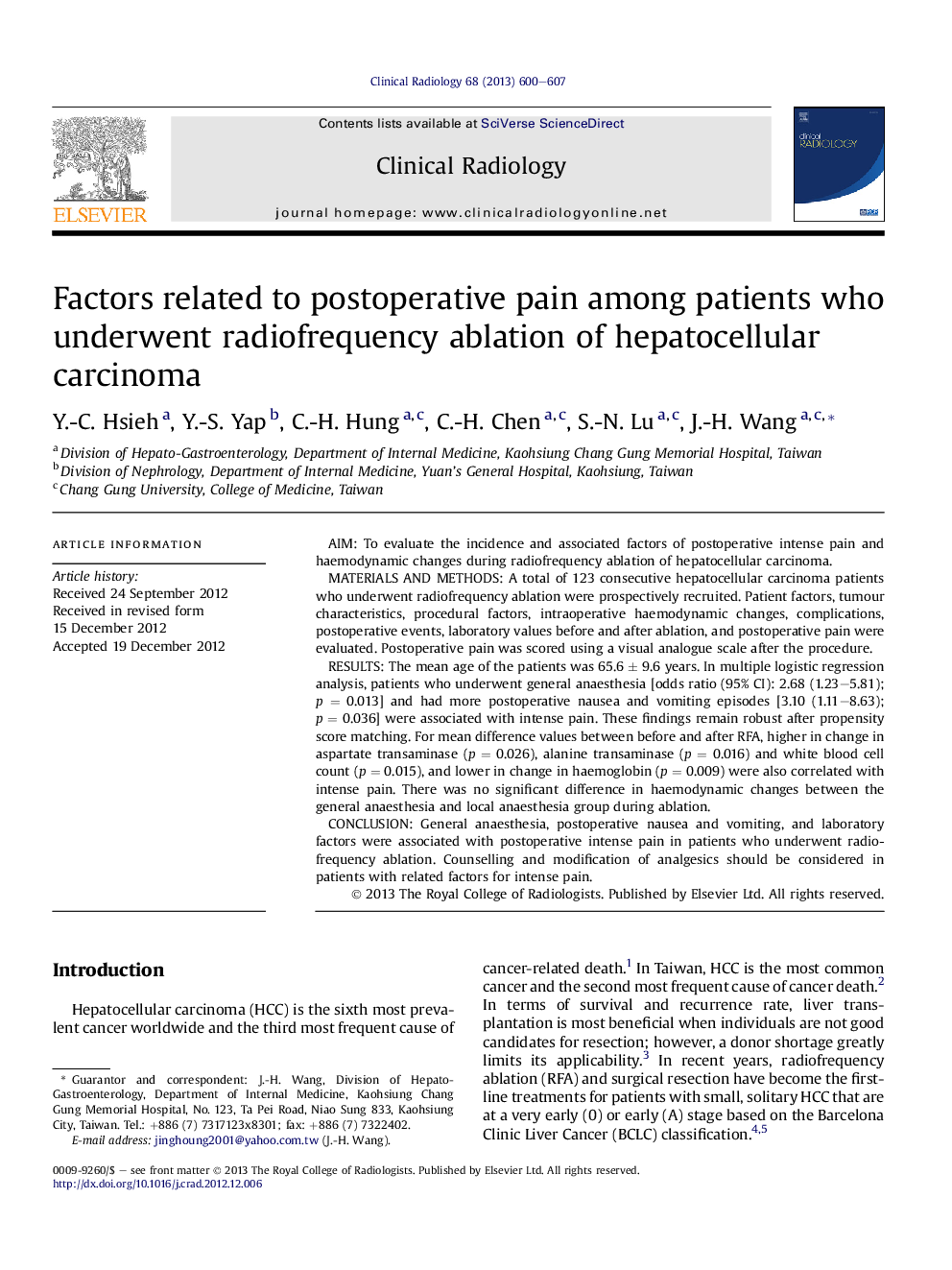| Article ID | Journal | Published Year | Pages | File Type |
|---|---|---|---|---|
| 3981898 | Clinical Radiology | 2013 | 8 Pages |
AimTo evaluate the incidence and associated factors of postoperative intense pain and haemodynamic changes during radiofrequency ablation of hepatocellular carcinoma.Materials and methodsA total of 123 consecutive hepatocellular carcinoma patients who underwent radiofrequency ablation were prospectively recruited. Patient factors, tumour characteristics, procedural factors, intraoperative haemodynamic changes, complications, postoperative events, laboratory values before and after ablation, and postoperative pain were evaluated. Postoperative pain was scored using a visual analogue scale after the procedure.ResultsThe mean age of the patients was 65.6 ± 9.6 years. In multiple logistic regression analysis, patients who underwent general anaesthesia [odds ratio (95% CI): 2.68 (1.23–5.81); p = 0.013] and had more postoperative nausea and vomiting episodes [3.10 (1.11–8.63); p = 0.036] were associated with intense pain. These findings remain robust after propensity score matching. For mean difference values between before and after RFA, higher in change in aspartate transaminase (p = 0.026), alanine transaminase (p = 0.016) and white blood cell count (p = 0.015), and lower in change in haemoglobin (p = 0.009) were also correlated with intense pain. There was no significant difference in haemodynamic changes between the general anaesthesia and local anaesthesia group during ablation.ConclusionGeneral anaesthesia, postoperative nausea and vomiting, and laboratory factors were associated with postoperative intense pain in patients who underwent radiofrequency ablation. Counselling and modification of analgesics should be considered in patients with related factors for intense pain.
